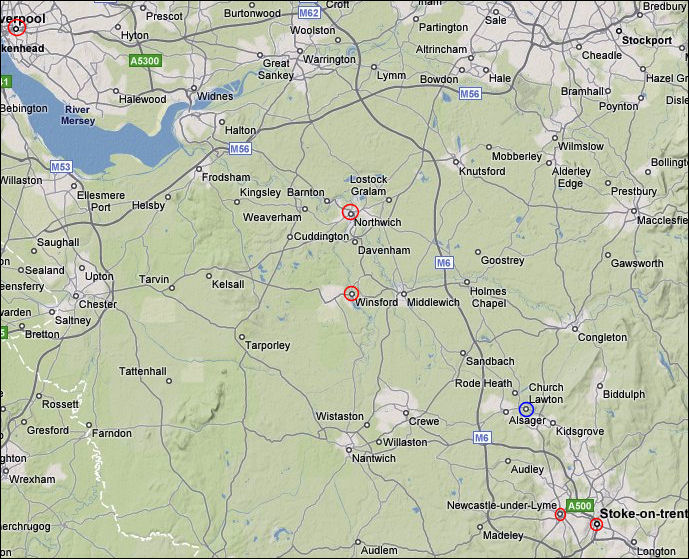|
The need to export:
The eighteenth century saw the development of
the North Staffordshire pottery industry from a cottage industry to major
industrial manufacturing, exporting to the Americas, Europe and Russia.
In 1710 there were around 500 people employed
in pottery manufacture. In the Burslem area alone, by 1760 this had risen to
150 manufactories employing 7,000 people. And by 1785 15,000 people across
the whole of the Potteries area.
Fine pottery was the order of
the day - a gift of a tea set to Queen Charlotte, consort of George III,
produced a appointment of Wedgwood as Potter to Her Majesty in 1765 and in
1770 a commission to produce a dinner and dessert service for Russian
Empress Catherine II.
With royal patronage as a mark
of approval every household wanted ware from the Potteries manufactories -
there was an increasingly great need to bring in raw materials and export
finished ware.
The turnpike roads:
The first route to be turnpiked (1714)
was the main route through Newcastle-under-Lyme on up to Winsford in
Cheshire or Willmington in Derbyshire - this benefited the pottery companies
and was supported by the leading potters.
The connection was the packhorse road from the
Fountain Place works of Enoch Wood in Burslem, though Longbridge (now
Longport) and onto to Newcastle.
For the
next 50 years Newcastle was engaged in a contest to retain its control
over the rapidly growing pottery towns - it monopolised the tolls on the
only adequate road.
In
1763 the potters petitioned Parliament to build its own turnpike
roads. The corporation of Newcastle-under-Lyme opposed this move
since it would mean a loss of revue to the town - they had their own
toll gates.
A
House of Commons Committee called for evidence from the petitioners
and in 1763 Wedgwood told them that the roads were "in very bad
condition, narrow in some parts, and in the Winter Season impassable
in many places". Parliament granted their Bill and turnpikes from
the Potteries towns were constructed.
The principle
Potteries turnpike road was Hill Street (later Liverpool Road
and now Westport Road) - this effectively gave a road from Stoke,
through Burslem to Church Lawton, completely bypassing Newcastle.
The packhorse lane from Burslem through Longport to Newcastle was
also turnpiked.
This new network of roads
giving better and more direct access to the seaports, freeing the pottery
towns from indebtedness to the borough of Newcastle.

|
![]()
